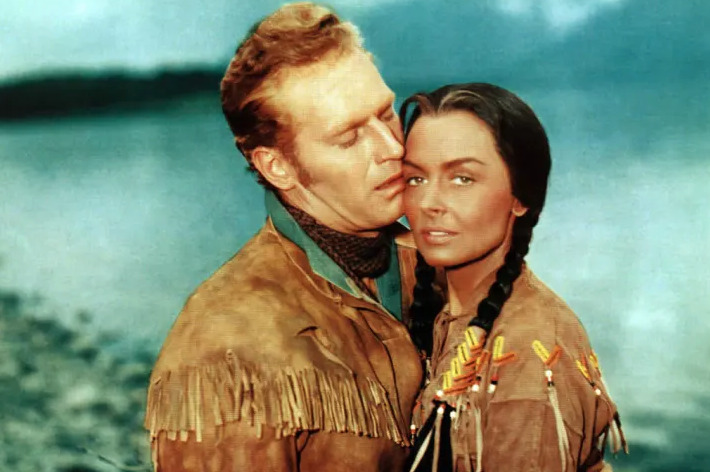Native Americans in Film
One common form of ethnography in contemporary American society is film; with graphic images and audio which capture multiple senses, film has a way of infiltrating our subconscious in ways which other art strives to do. Unfortunately, this means that inaccurate, racist ethnography finds its way into film all too often. Worse, these portrayals can fly under the radar of many non-Native people who grew up with these "classic" films, allowing them to build harmful depictions of Native Americans which inform the actions and speech of many non-Native people.
Films which involve Native American characters have historically cast white people into Native roles, such as Donna Reed playing Sacajawea in The Far Horizons. This casting choice effectively prevented Native people from having any voice in how they were portrayed in popular media, limiting the potential for autoethnography to occur. Without Native participation in film, it was impossible for Natives to interact with and change the stereotypical portrayal of their diverse characters, cultures, and identities. The film The Far Horizons erased the story of violent colonization of Native land and genocide by replacing it with the single story told to white generation after white generation in America: a story solely depicting Lewis and Clark’s “brave” expedition West, which, if it included Native people at all, portrayed Sacajawea as a willful, peaceful “mediator” between Lewis and Clark and in the Native Americans (Black 37).
Another harmful pattern we seen in media, such as films, which depict Native Americans is a pattern of romantic tropes; often, a Native character, such as Sacajawea in The Far Horizons or Pocahontas in Disney’s Pocahontas, is depicted as entering into a voluntary romantic relationship with a white colonizer. These romantic tropes paint Native Americans as consenting parties in their own colonization, while simultaneously pushing the occurrence of colonization to the background (Black 38).
